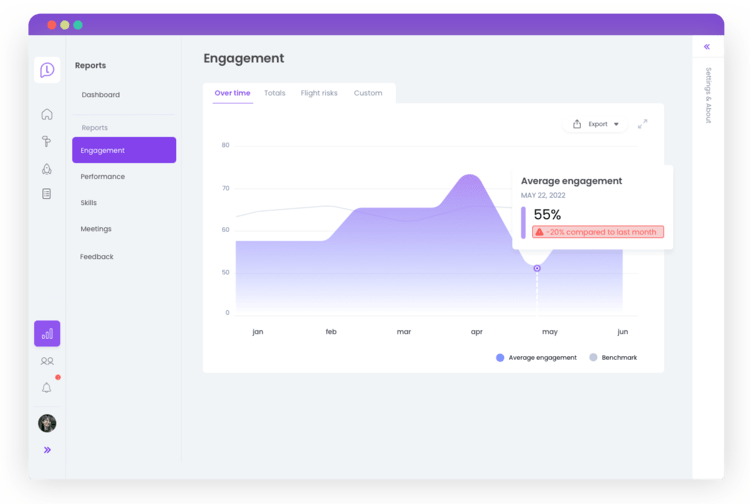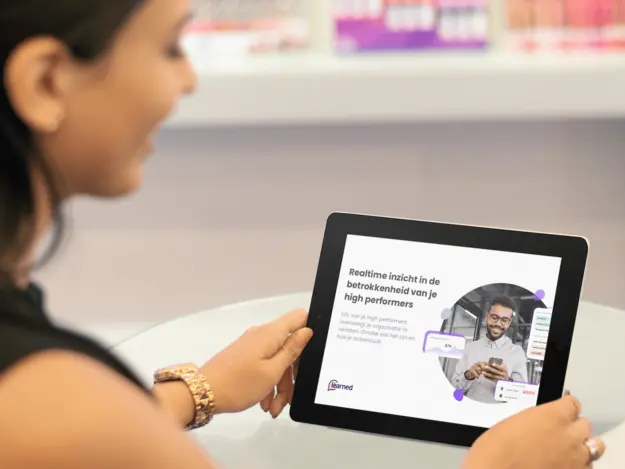In this blog, we dive deeper into the world of HR analytics, also known as people analytics, and discover how collecting and analyzing data about employees can lead to data-driven decisions in an organization’s talent management. HR analytics provides valuable insights into performance, retention, absenteeism, recruitment and many more aspects of the workforce. We discuss how to collect relevant HR data and use advanced analytical techniques to identify trends and patterns. Moreover, we look at the critical role of tooling in optimizing HR analytics implementation and leveraging valuable insights to improve overall business performance and employee satisfaction. Read on to discover what HR analytics is and how it can help lead your organization to success!
What is HR analytics?
HR analytics, also known as people analytics, is a strategic approach that uses data and statistics to understand an organization’s workforce. It includes collecting and analyzing data on employees, such as performance, retention, absenteeism and recruitment, to identify trends and patterns. With HR analytics, organizations can make data-driven decisions about talent recruitment, retention and development. Through these insights, HR professionals can improve the effectiveness of HR initiatives, solve problems and increase overall business performance and employee satisfaction. Download our free e-guide to reach key insights about your employee engagement.
Applications of HR analytics
Integrating HR analytics is increasingly on the agenda of organizations. But how and where do you best apply this? You can deal with this in different ways. First, it is essential to collect relevant HR data, such as performance, absenteeism rates, recruitment sources and training results. Then advanced analytical techniques, such as statistical models and machine learning algorithms, can be used to analyze this data and discover trends and patterns. This allows the organization to understand bottlenecks, opportunities and the effectiveness of HR initiatives.
HR analytics can be used to predict future staffing needs, identify high-potential employees, improve recruitment and selection, and optimize training programs. In addition, it can help identify factors affecting employee satisfaction and retention, and proactively address issues.
The role of tooling in HR analytics
As you can see, HR analytics is all about processing large amounts of data. Therefore, tooling plays an important role in this as well. In particular, by using the right tools effectively, you can process far more information correctly than a human being ever could. These tools can include data warehouse systems, business intelligence tools and advanced analytics software.
With the right tooling, HR professionals can efficiently collect data from various sources, such as HRM systems, timekeeping systems, performance reviews and surveys. It also allows them to visualize data in clear dashboards and reports, making trends and patterns easier to understand.
Furthermore, tooling enables advanced analytics, such as predictive modeling and machine learning, to identify future trends and needs. It facilitates interpreting results and making data-driven decisions for talent management and HR strategies.
Proper use of tooling optimizes HR analytics implementation, accelerates data analysis and helps organizations extract valuable insights from their workforce data to better anticipate needs, retain talent and improve overall performance.
Gain new insights with HR analytics in Learned
By setting up your entire Talent Management strategy in Learned, you collect large amounts of data as an organization. Therefore, the Learned platform also provides various reports and dashboarding to properly interpret and visualize this data. This is how you come to new insights and help Learned make strategic decisions.

With Learned, you implement continuous short MTOs with a few questions per week in the same time as an annual Employee happiness survey. This way you keep real-time insight into your employee engagement throughout the year and see the effect of your HR initiatives immediately. Try Learned now for 14 days for free!
Explanatory image: In this example, you can see the power of ongoing short Employee happiness surveys. Due to a negative situation in April, you see a sharp drop in employee engagement in May. Frequent measurements allow you to take immediate action on this.




